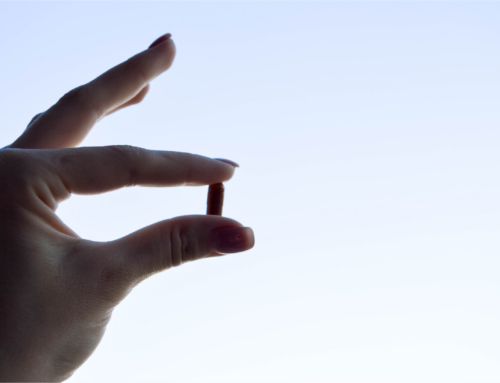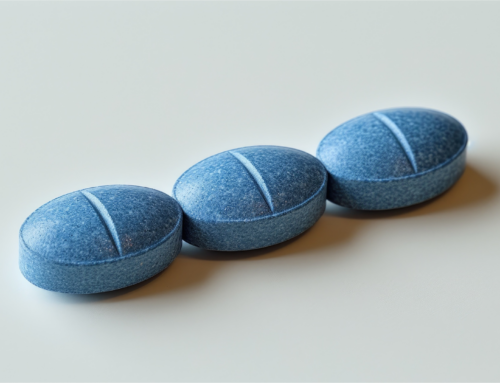Naltrexone works by blocking the opioid receptor. The usual dose, when prescribed, is 50mg daily and has been approved for use to treat several conditions, such as helping in the treatment of alcoholism and other opioid addiction disorders (Sudakin, D 2016). However, when low-dose naltrexone (LDN) is used, it can encourage the body to produce more endorphins and help regulate the immune system.
LDN in Clinical Use
In the 1980s, the pioneering work of Dr Bihari saw the first use of low-dose naltrexone in doses ranging from 1.3mg to 3mg in helping to treat patients who have HIV (Bihari, B 2013). However, the use of low-dose naltrexone (LDN) remains an off-label use since there have not yet been any large-scale clinical trials to authorise its widespread use; this is despite the success that many doctors have witnessed in their patients suffering from autoimmune conditions.
Despite the reluctance of widespread uptake in conventional medical circles, the evidence is slowly mounting as more people find success with LDN. In particular, the uptake has drastically increased in Norway following positive results that have been widely circulated, causing more patients and doctors to become more educated about the benefits of LDN(Raknes, G.; Småbrekke, 2017).
Naltrexone
Naltrexone is a well-known opioid antagonist used in chronic or acute states of abuse (Schumacher, M.; Basbaum, A., 2014). So, if naltrexone blocks the opioid receptor, then how does this explain the effects of LDN? When researchers started to experiment with lowered doses of naltrexone, they found that it changed the way it acted on the body. In other words, low doses changed the drug’s pharmacodynamic properties.
Endorphins
It is well known that opiates such as morphine are potent painkillers, but the body is also capable of producing similar substances called endorphins. The name “endorphin” is derived from “endogenous morphine.”
These endorphins are produced by most cells in the body and play an essential role in regulating cell growth. As a consequence of this action, they can exert a positive influence on the immune system. It is found that immune system disorders are associated with lower levels of these endorphins.
Opioid Cell Growth Factor
Opioid cell growth factor (OGF) or Met-Enkephalin is an endorphin that can influence cell growth and the immune system. It has to “dock” with the zeta receptor on the cell’s surface to exert its action on the cell. So, for the beneficial actions to occur, both opioids and receptors are required.
How LDN works
When LDN is administered, they occupy these zeta or OGF receptors and displace the natural endorphins. When this displacement occurs, it causes the body to try and compensate by:
- Increasing production of OGF receptors means there is an increased chance of interacting with a stray OGF molecule.
- The receptor sensitivity increases.
- Production of OGF is increased.
LDN only blocks the OGF receptors for a few hours before it is excreted from the body. This causes a rebound effect, in which OGF production and utilisation are significantly increased. LDN upregulates opioid signalling (Rahn, K.A.; McLaughlin, 2011).
So, while the LDN blocks the OGF receptor, the body is busy preparing a counterattack. When the LDN is metabolised and excreted by the body, the reinforcements arrive in the form of more OGF molecules and OGF receptors. The body has also increased the sensitivity of these receptors, making interactions between OGF and receptors easier. In this way, LDN has primed the immune system, thus preparing the body to heal itself.
Metabolism of LDN and the rebound effect Different people metabolise LDN at different rates, and the resulting “rebound effect” can also vary between people. However, this positive aftereffect of LDN generally lasts for about a day.
To maximize this rebound effect, a low dose is required. Using a high dose of Naltrexone or a timed-release formulation will result in continuous blockade of OGF receptors. The LDN only causes intermittent blockade, thus allowing for a rebound effect.
Low-Dose Naltrexone Preparations
Low-dose naltrexone (LDN) is not a commercially licensed medication, meaning it is not mass-produced. Therefore, LDN is exclusively available from compounding pharmacies specialising in preparing such formulations. These pharmacies create LDN on a personalised basis, offering it in liquid form or as capsules. A recent advancement in the compounding pharmacy field in the UK is the introduction of transmucosal LDN film tablets. APC Labs is currently the sole compounding pharmacy in the UK, offering LDN in this innovative format. These film tablets are placed on the inner cheek, where they dissolve and allow for rapid absorption of LDN into the bloodstream. This bypasses the liver’s first-pass metabolism, ensuring a quicker onset of action and enhanced drug absorption. If you want to try the new transmucosal LDN film tablets, please contact APC Labs today for more information.
References:
Bihari, B. Low-dose naltrexone for normalising immune system function. Altern. Ther. Health Med. 2013, 19, 56–65.
Rahn, K.A.; McLaughlin, P.J.; Zagon, I.S. Prevention and diminished expression of experimental autoimmune encephalomyelitis by low dose naltrexone (LDN) or opioid growth factor (OGF) for an extended period: Therapeutic implications for multiple sclerosis. Brain Res. 2011, 1381, 243–253.
Raknes, G.; Småbrekke, L. A sudden and unprecedented increase in low-dose naltrexone (LDN) prescribing in Norway. Patient and prescriber characteristics and dispense patterns. A drug utilisation cohort study. Pharmacoepidemiol. Drug Saf. 2017, 26, 136–142.
Schumacher, M.; Basbaum, A.; Ramana, N. Opioid Agonists & Antagonists. In Basic & Clinical Pharmacology & Toxicology, 13th ed.; Katzung, B., Trevor, A., Eds.; Wiley: Hoboken, NJ, USA, 2014; p. 531
Sudakin, D. Naltrexone: Not Just for Opioids Anymore. J. Med. Toxicol. 2016, 12, 71–75.

Written by Mr. Shazlee Ashan
BSc Pharmacy, MSc Endocrinology, PgDip Infectious Diseases, Ipresc




